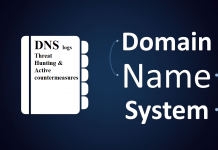Most advertisers look at cost per acquisition like it’s a single number that applies the same way across every ad format. Banner ads, native placements, video, popunders—they measure them all against the same CPA target and make decisions based on which one hits that number.
That approach misses something important. Different formats attract users at different stages of intent, with different behaviors, and different paths to conversion. Treating them all the same means you’re probably killing campaigns that actually work and scaling ones that don’t.
Why the Same CPA Target Doesn’t Work Everywhere
A click from a banner ad isn’t the same as a click from a native article or a visit from a popunder. The context is different, the user’s mindset is different, and what happens after that initial interaction varies wildly.
Banner clicks often come from people in browsing mode. They saw something that caught their eye while doing something else. That’s valuable, but it’s not the same as someone who clicked a native ad embedded in content they were actively reading and engaged with.
Popunders work on a completely different timeline. The ad loads in the background and gets attention during natural breaks or when someone finishes what they were doing. These users aren’t clicking in the moment—they’re discovering your offer when they’re between tasks.
If you’re measuring all of these against the same immediate CPA, you’re not actually comparing apples to apples.
The Attribution Window Problem
Here’s where it gets tricky. Most advertisers use a 24-hour or 7-day attribution window and call it good. But different formats have different natural conversion timelines.
Direct response formats like search ads or retargeting banners convert fast. Someone’s looking for a solution right now, sees your ad, clicks, and buys. Your CPA calculation is clean because most conversions happen within hours.
Other formats plant seeds. A native ad that educates someone about a problem they didn’t know they had might not convert for weeks. A popunder advertising format often introduces people to offers during low-pressure moments, leading to conversions days later when they’re actually ready to buy.
Use a short attribution window and you’ll think these formats don’t work. Extend it appropriately and suddenly the CPA looks completely different.
Volume Changes the Math
Small-scale testing and large-scale campaigns operate under different economics. A format that delivers a $50 CPA at $500/day spend might maintain that at $2,000/day, or it might completely fall apart.
Premium display placements often scale poorly. You can get great CPAs on your first few thousand dollars because you’re hitting the best inventory. But as you push more budget, you’re forced into lower-quality placements and the CPA climbs.
Higher-volume formats typically scale better even if their initial CPA looks worse. You might start with a $65 CPA instead of $50, but you can push significantly more spend before quality degrades. At scale, the format with the “worse” starting CPA might deliver more total conversions at a better blended cost.
User Quality Varies By Format
Not all conversions are created equal. Someone who converts from one format might become a loyal customer. Someone from another format might buy once and never return.
This is particularly relevant for subscription businesses or anything with repeat purchase potential. A format that delivers a $40 CPA but attracts customers with 80% retention looks way better than a $30 CPA format where 70% of people cancel within a month.
Smart advertisers track lifetime value by acquisition source. They know which formats bring in customers who stick around, refer others, or buy additional products. That completely changes how they evaluate CPA.
The Competition Factor
CPA varies by format partly because competition varies by format. Everyone’s fighting for the same premium banner spots or the top native placements. That competition drives up costs.
Less saturated formats often deliver better CPAs simply because fewer advertisers are bidding on that inventory. The traffic quality might be comparable or even better, but you’re paying less because the auction isn’t as crowded.
This advantage doesn’t last forever. Once enough advertisers discover an underpriced format, costs rise. But the advertisers who test early and optimize while competition is low get months or years of better economics.
Testing Needs Different Parameters
When you test a new format, using the same testing parameters as your proven channels sets you up to kill potentially good campaigns too early.
If you normally test with $200 budgets over 48 hours, that might work fine for banner ads where conversion happens fast. Apply the same test to formats with longer conversion windows and you’re making decisions with incomplete data.
Better approach: adjust your testing methodology to match the format. Give longer-cycle formats more time and bigger budgets. Track beyond your usual attribution window. Look for leading indicators like engagement metrics or add-to-cart rates, not just immediate conversions.
The Blended CPA Strategy
The smartest advertisers don’t optimize each format to hit the same CPA. They optimize their overall marketing mix to hit a blended CPA that allows for variation across channels.
They might accept a $70 CPA on one format because it delivers high-volume, loyal customers. They’ll push another format to $45 CPA because it scales easily even though customer quality is slightly lower. A third format might run at $55 because it reaches an audience segment that’s hard to find elsewhere.
The goal isn’t making every channel match some arbitrary target. It’s building a mix of channels that each contribute something valuable while the overall economics work.
What Actually Matters
Stop treating CPA as a fixed target that applies uniformly. Start thinking about it as a flexible metric that needs context to be useful.
Ask better questions: What’s the conversion timeline for this format? How does it scale? What’s the customer quality? What’s the competitive environment? How does this fit with my other channels?
Different formats serve different purposes in your overall strategy. Some are great for reaching cold audiences. Others excel at closing warm prospects. Some deliver volume, others deliver quality, and a few deliver both but don’t scale.
The advertisers who figure this out stop leaving money on the table. They’re not killing campaigns that actually work just because they don’t fit a narrow definition of success. And they’re not scaling campaigns that hit their CPA target but deliver low-quality customers.
Understanding how CPA works across formats isn’t complicated. But it requires thinking beyond simple benchmarks and actually considering what each format does and how users behave within it. Most advertisers skip that step and wonder why their campaigns underperform.



































